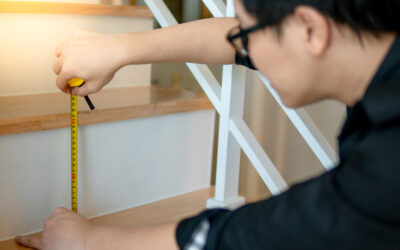Introduction: Subfloors: Plywood, Levelling Compound or Both?
Installing floors, like any aspect of home improvement, requires thorough preparation to achieve a lasting and quality finish. This is where having a smooth, level, clean and dry subfloor comes in. Traditionally, plywood has been the subfloor of choice for many years. However, self-levelling compounds have increased in popularity of late. There is also the question of whether using a levelling compound over a plywood base is worthwhile. With all these areas to explore, let’s get started!
Advantages of a Plywood Subfloor
1. Structural Strength: A plywood subfloor offers a solid foundation. This is particularly important in areas of high footfall, such as an entrance hall. This can also be useful if you are installing a heavier top floor such as ceramic or porcelain tiles over the top.
2. Moisture Resistance: As long as your plywood is properly treated and sealed or is of marine plywood standard, then it has a high resistance to moisture making it a great subfloor choice for kitchens and bathrooms.
3. Compatibility with Top Floors: Plywood is an unfussy subfloor meaning that you can pretty much lay your choice of top floor over it. Whether you chose luxury vinyl tiles, carpet, ceramic tiles, laminate or real wood – it does not matter, as all are compatible with a plywood subfloor.
Advantages of Levelling Compound Subfloor
1. It Can Level Anything: Whether your subfloor is currently made of concrete or plywood or any other material, chances are a self-levelling can be poured over the top to it to create a smooth and level finish. Double check the compound manufacturer’s instructions to see if it can be laid over your current subfloor material.
2. Saves Time and Money: Laying a traditional subfloor such as plywood is a time-consuming process that involves measuring, cutting and fixing the subfloor down. This is also labour consuming which increases cost. However, a self-levelling compound can be poured and left to set, saving lots of time and therefore money too!
3. Covers Defects: Even the best laid plywood subfloor, carefully installed by a professional may have some imperfections. By pouring a self-levelling compound over the top, you can remove even the most minor of imperfections creating a perfect subfloor layer upon which your top floor can be laid for a lasting finish.
4. Thin Application: Installing plywood planks might add unnecessary thickness to your subfloor, which in turn will affect door frames and skirting boards. Whereas, a self-levelling compound only creates a thin layer meaning that less work may be needed later on to adjust for a change in floor height.
5. Prevents Damage: Most top floors require a perfectly level and smooth subfloor to prevent cracking and increase the longevity of the floor. A self-levelling compound can provide this perfect subfloor.
Should I Use a Levelling Compound on a Plywood Subfloor?
Let’s say that you already have a plywood subfloor, you might be wondering if it is worth adding a levelling compound on top of your plywood before laying your top floor of choice. The answer is that it depends on the quality of your plywood subfloor. If the existing plywood subfloor is smooth, level and dry then you can go right ahead and lay your top floor of choice over it. However, if your plywood subfloor has some minor imperfections, such as unevenness and small cracking, then applying a self-levelling compound is a sensible idea to create a perfectly level subfloor for your top floor of choice. If your plywood subfloor is seriously uneven, cracked or showing signs of moisture damage, then you may need to rip it out and lay a completely new subfloor instead.
Considerations When Using Levelling Compounds on Plywood
Let’s say you make the sensible decision of using a self-levelling compound on your plywood subfloor to create a perfectly level and smooth surface to lay your top floor of choice on. Here is what you need to consider to ensure you do a good job.
1. Inspect the Plywood: Ensure your plywood subfloor is structurally sound with no signs of warping, excessive movement or signs of moisture damage.
2. Seal Joints: You may need to seal the joints between plywood boards with caulk before applying the self-levelling compound. This will help prevent the self-levelling compound from seeping through the cracks upon application.
3. Consider Priming: To ensure a good adhesive contact between the self-levelling compound and the subfloor consider priming the plywood first.
Conclusion
When it comes to subfloors, plywood is an excellent choice as it is structurally sound. However, plywood subfloors can be uneven and contain imperfections. This is where using a self-levelling compound comes in, as it can provide that perfectly smooth and level surface upon which you can lay your top floor of choice. At Flooring Hut, we supply both plywood and levelling compound to help you create the perfect subfloor.









